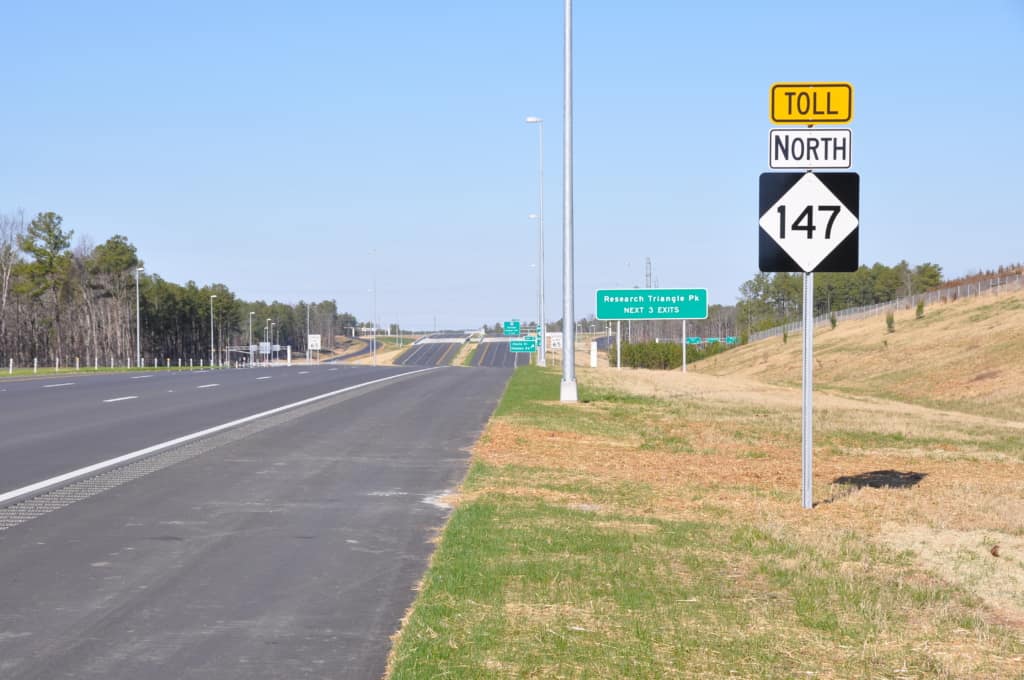
“Do you think that we could get Amazon?” has been a question on many Triangle-area residents’ minds as news outlets spread the word of Amazon’s search for a location to build a second headquarters. These “will they come?” exercises are fairly frequent, but the Amazon discussion is in tighter focus because of the way the company’s list of desired community features matches up with what the Triangle has to offer.
A lot of the discussions have centered on the type of incentive package that would be required to allure Amazon and which government entity should lead the charge. The real question, however, is can the area handle it?
The scale of Amazon’s potential endeavor is difficult to grasp. There are clearly stated metrics of size—an 8 million square foot campus, 50,000 new workers, $5 billion of investment—but what do these numbers really mean?
An 8 million square foot campus is a bigger built environment than either downtown Durham or downtown Raleigh.
Similarly, we are now used to thinking of populations in terms of millions of people, so it is easy to gloss over the impact of 50,000 employees. From an employment perspective, that is roughly 20 percent more employees than Duke University, the region’s largest private employer.
In a recent article about Amazon’s expansion, the Wall Street Journal noted that Lenovo is another company that maintains two headquarters, one of which is in the Research Triangle Park. According to a company fact sheet, Lenovo employs 2,200 people in North Carolina.
In terms of number of bodies, the daytime population of a North Carolina-based Amazon campus would make it the equivalent of the state’s 19th largest city. It would have more workers than are currently working in downtown Raleigh.
For the sake of illustration, let us assume that an Amazon site was somewhere in the Research Triangle Park. The current daily traffic count at the intersection of I-40 and I-540 is 192,000 cars per day. The count at I-40 and the Durham Expressway is a little lower at 168,000 cars per day. Based on the anticipated Amazon employee population alone, that area could see a 25 percent increase in traffic. For those who have sat on I-40 during heavy congestion, that means that for every four cars on the road, a fifth would squeeze-in.
What is more, those impacts are based on Amazon employees alone and without the use of multipliers that will no doubt come with the headquarters. Amazon’s global network and influence will attract other businesses to its chosen region, not to mention the family members of its employees.
Despite all of this, I am largely optimistic and hopeful that the Triangle region makes the short-list of communities Amazon is considering. However, in so hoping, I have to remind myself that this is unlike any company relocation North Carolina has ever seen and is on a short list of expansions that have ever been done at this scale.
For the time being, whether or not Amazon chooses North Carolina for its headquarters is beside the point. The necessary thought exercise is tied to what would need to happen if a company like Amazon does.
Planners and regional leaders will point to all of the logistical and infrastructural pieces that are needed. They are right. Infrastructure will have to happen at a committed level and a rapid rate. Sacrifices will be made. Growth, especially fast growth, has a price.
These sacrifices and this price leaves the Triangle area with a deep-seeded identity question. Is it ready and willing to become a first-tier metro area?
Some folks in Raleigh, Durham and other Triangle communities talk about the 2040 growth projections in dreamy way. It is an alluring light to head towards, but there is a lack of surety about how and when the region will ever get there. At different levels and at different points, Triangle area communities notice growth pangs, but on the whole the region enjoys the amenities and the wealth that come with consistent growth. The Triangle has maintained the ability be a 2nd tier metro area when it wants to be and to revert to a looser coalition of political interests when it does not.
If Amazon were to come to the Triangle, dreams of growth become a reality. “Projected to grow” becomes “will grow.” Is the region ready for that and what that means to regional identity?
Some would argue the Triangle area is already past the point of no return and that its trajectory is already clear. History may show that to be the case, but the Triangle has not yet begun to act like it and does not yet make governance and infrastructure decisions that show a clear commitment to the growth trajectory. For example, the region lacks a coherent commitment to designing and funding a regional transportation system. Likewise, affordable housing and public education have been some of the Triangle area’s hallmarks but are starting to show the pressure points that pop up with continual growth.
If you told me that the Triangle region had 30 years to get there, I would feel confident. However, with Amazon’s proposed 15-year build out, I worry about whether the regional identity is sufficiently mature. As we have seen in Houston these last weeks, growth, land use, and infrastructure decisions made or ignored decades earlier can come back to haunt a region.
This notion of identity is nebulous but important. A community that is not sure of itself and sure of its commitment to the future will not win Amazon’s confidence. Is the Triangle ready to become what it takes to compete on this first-tier stage? If not, then the region must continue through its metropolitan adolescence and find itself. If so, residents should buckle up and prepare for a ride.
Weekly Insight

